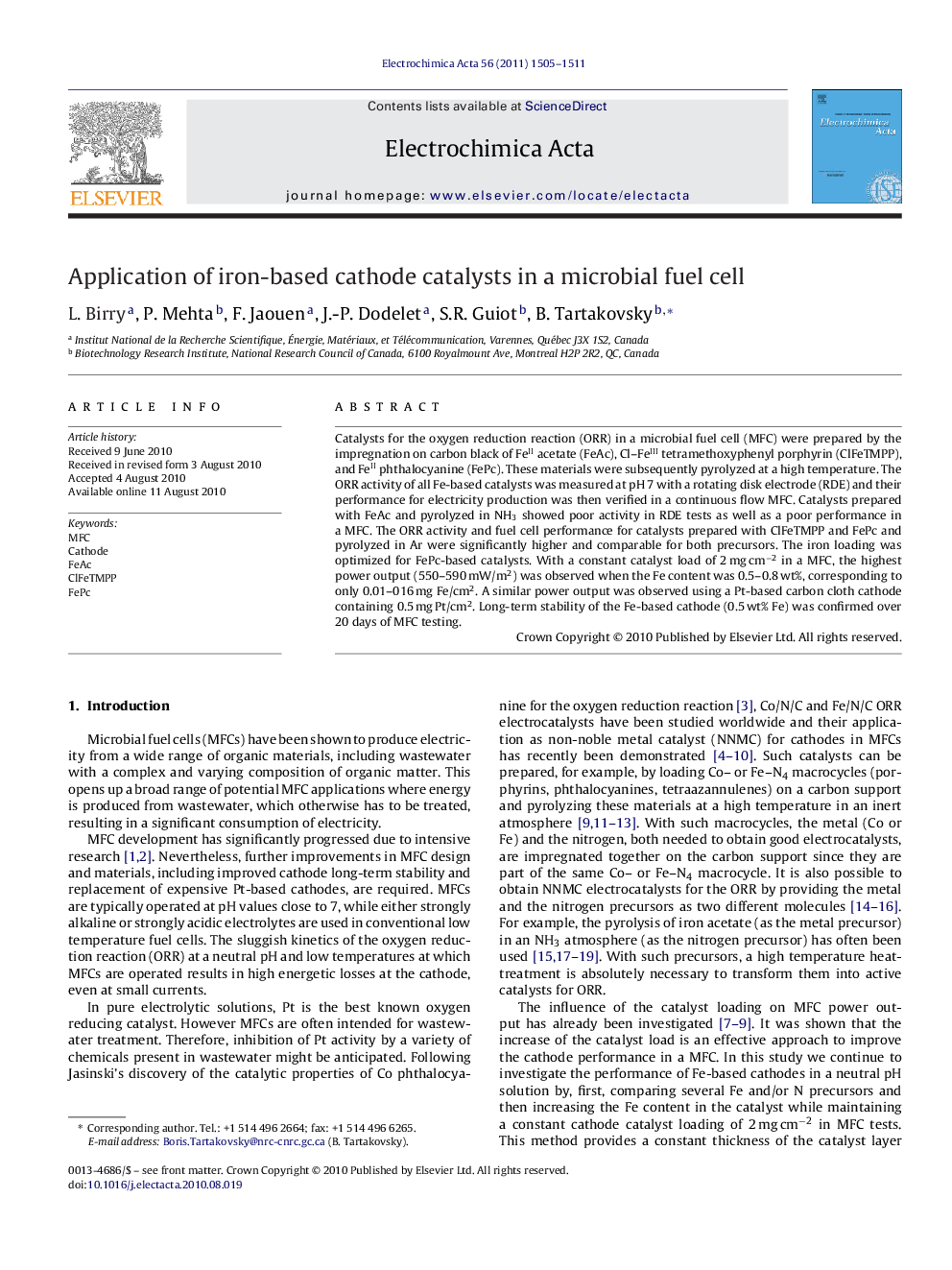| کد مقاله | کد نشریه | سال انتشار | مقاله انگلیسی | نسخه تمام متن |
|---|---|---|---|---|
| 191436 | 459721 | 2011 | 7 صفحه PDF | دانلود رایگان |

Catalysts for the oxygen reduction reaction (ORR) in a microbial fuel cell (MFC) were prepared by the impregnation on carbon black of FeII acetate (FeAc), Cl–FeIII tetramethoxyphenyl porphyrin (ClFeTMPP), and FeII phthalocyanine (FePc). These materials were subsequently pyrolyzed at a high temperature. The ORR activity of all Fe-based catalysts was measured at pH 7 with a rotating disk electrode (RDE) and their performance for electricity production was then verified in a continuous flow MFC. Catalysts prepared with FeAc and pyrolyzed in NH3 showed poor activity in RDE tests as well as a poor performance in a MFC. The ORR activity and fuel cell performance for catalysts prepared with ClFeTMPP and FePc and pyrolyzed in Ar were significantly higher and comparable for both precursors. The iron loading was optimized for FePc-based catalysts. With a constant catalyst load of 2 mg cm−2 in a MFC, the highest power output (550–590 mW/m2) was observed when the Fe content was 0.5–0.8 wt%, corresponding to only 0.01–016 mg Fe/cm2. A similar power output was observed using a Pt-based carbon cloth cathode containing 0.5 mg Pt/cm2. Long-term stability of the Fe-based cathode (0.5 wt% Fe) was confirmed over 20 days of MFC testing.
Journal: Electrochimica Acta - Volume 56, Issue 3, 1 January 2011, Pages 1505–1511